Physics
Sign up for our newsletter
We summarize the week's scientific breakthroughs every Thursday.
-
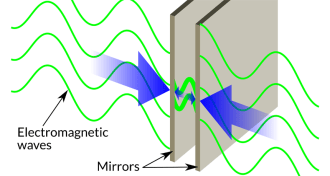 Quantum Physics
Quantum PhysicsTrying to get the down-low on gravity
A twist on a classic quantum mechanics experiment could lead to the discovery of elusive gravitons.
By Andrew Grant -
 Quantum Physics
Quantum PhysicsPhysicists double their teleportation power
In a teleportation first, physicists transfer two quantum properties from one photon to another.
By Andrew Grant -
 Science & Society
Science & SocietyEnjoy scientific curios collected over decades
Explore a modern scientist's curiosity cabinet.
-
 Science & Society
Science & Society‘This Idea Must Die’ singles out scientific theories ready for retirement
Researchers and writers weigh in on theories getting in the way of scientific progress in this collection of essays.
-
 Materials Science
Materials ScienceOld chemistry gives jolt to modern batteries
Chemical reactions discovered in the 19th century improve the performance of futuristic batteries.
-
 Quantum Physics
Quantum PhysicsQuantum guessing game uses the future to predict the past
Physicists extrapolate forward and backward in time to make accurate predictions about an object’s quantum state at a particular moment.
By Andrew Grant -
 Physics
PhysicsHow a violin’s f-holes influence its sound
F-shaped holes move air faster, allowing classic violins to put out more powerful sounds at lower frequencies than their ancestors, a new study shows.
-
 Physics
PhysicsOn the biomechanics of popcorn
When popcorn pops, the biomechanics resemble both an explosion and a spring.
-
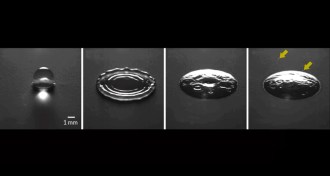 Physics
PhysicsRaindrops kick up soil chemicals
The champagne-like fizz produced when a raindrop hits the ground may be responsible for the earthy aroma after a rainstorm.
By Andrew Grant -
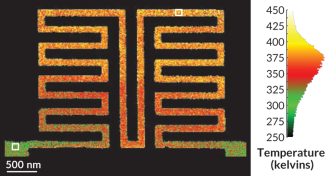 Physics
PhysicsTemperatures taken in the realm of the tiny
Aluminum and other materials can serve as their own thermometers at nanometer scales, opening up the possibility of taking the temperature of tiny computer transistors.
By Andrew Grant -
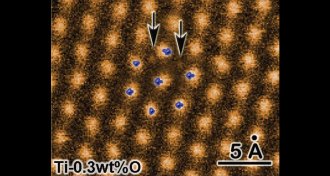 Materials Science
Materials ScienceOxygen sneaks into titanium, making it brittle
Oxygen atoms trigger defects in titanium’s atomic structure, making the metal brittle.
By Beth Mole -
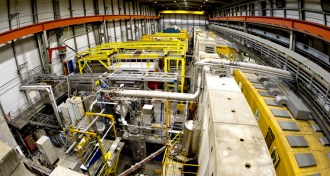 Particle Physics
Particle PhysicsNew particle may be made of four quarks
A newly discovered particle may be comprised of four quarks, a new study posits.
By Andrew Grant